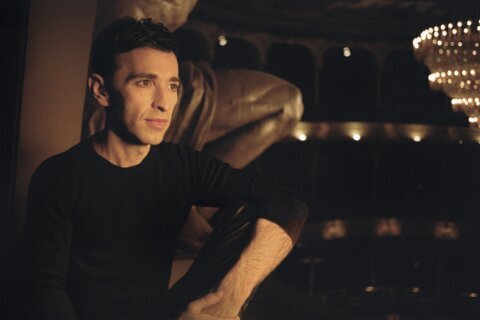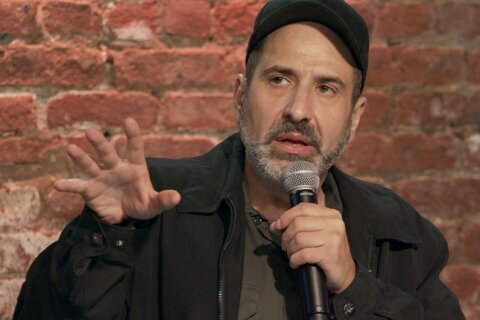WASHINGTON — They shared the screen in “Django: Unchained” (2012).
Now, Leonardo DiCaprio and Samuel L. Jackson battle at the box office in a pair of violent westerns transformed into artful epics by two of our era’s master filmmakers.
The brain behind “Birdman” (2014) takes on the visionary behind “Pulp Fiction” (1994).
Alejandro González Iñárritu’s “The Revenant” hits D.C. theaters this weekend.
Quentin Tarantino’s “The Hateful Eight” just opened New Year’s Eve.
Which is worth your time? And which deserves award consideration?
The answer is both — but there are a few things you should know going in.
‘The Hateful Eight’
You’ve heard of “The Dirty Dozen” and “The Magnificent Seven.” Now, meet “The Hateful Eight.”
Like “Django,” Tarantino once again explores race relations in 19th century America. Rather than Jamie Foxx in a slave revenge tale, we get Civil War veteran Major Marquis Warren (Samuel L. Jackson) who earned his freedom with the Union Army. He joins bounty hunter John “The Hangman” Ruth (Kurt Russell), prisoner Daisy Domergue (Jennifer Jason Leigh) and Sheriff Chris Mannix (Walton Goggins) on a stagecoach to Red Rock, Wyoming, but a blizzard forces them to take shelter.
As they enter a lodge, Minnie’s Haberdashery, they encounter a room of unique characters: The Mexican (Demián Bichir), The Little Man (Tim Roth), The Cow Puncher (Michael Madsen), The Confederate (Bruce Dern), O.B. Jackson (James Parks) and Jody Domergue (Channing Tatum).
Much of the film unfolds in this remote cabin, creating a deadly parlor game of a Western Whodunit. This claustrophobic setting allows equal opportunity for the ensemble cast to shine.
Kurt Russell (“Tombstone”) does his best John Wayne impression; Jennifer Jason Leigh (“Fast Times at Ridgemont High”) earns a Golden Globe nod for tacking a licking with a smile; Bruce Dern (“Nebraska”) is a convincing cranky Confederate; and Tim Roth and Michael Madsen (“Reservoir Dogs”) deliver with Mr. Orange and Mr. Blonde precision. Still, this is really the Samuel L. Jackson Show, proving there are few cinematic treats sweeter than Tarantino’s words in Jackson’s mouth.
https://www.youtube.com/watch?v=gnRbXn4-Yis
Complete with an old-school overture and intermission over 187 minutes, “The Hateful Eight” is an epic love note to the western epics of old, from its glorious 70 mm widescreen presentation to its Golden Globe-nominated score by Ennio Morricone (“The Good, The Bad & The Ugly”).
But more than just a nostalgic throwback, this is first and foremost a Tarantino movie: violent, vulgar, wisecracking, subversive and deceptively profound. When the opening credits announce “The 8th Film by Quentin Tarantino” we realize we’re watching not an isolated flick, but an auteur entry.
Tarantino fans are in for a treat, combining the bloody ballet and stylized violence of Sam Peckinpah (“The Wild Bunch”) with the cabin fever and dangling limbs of Sam Raimi’s “The Evil Dead” (1981). Tarantino is the embodiment of both sensibilities, fused into a 21st century cinephile genius.
Conversely, Tarantino detractors will find plenty to “hate” in Quentin’s “eighth,” from the over-the-top, almost cartoonish violence to the relentless profane dialogue. Like “Django,” his use of the “n”-word is again excessive beyond period-piece accuracy. As you grab popcorn at intermission, you’ll scratch your head: Is this a racist compulsion he can’t help? Or is he driving home a point?
By the film’s symbolic final image, I’d like to think the latter. Amid the cacophony of racist, sexist, “hateful” characters, Tarantino places our sympathy in a Lincoln letter, which becomes a familiar image of hope for America’s future. It’s a no-holds-barred Union vs. Confederate commentary.
Throughout, the visual symbolism is rich, from white and black horses pulling the stagecoach, to white vs. black chess pieces fittingly placed in front of corresponding characters, to the brilliant mise-en-scène of nooses hanging behind “The Hangman.” Particularly in the cabin, Tarantino puts on a masterclass of blocking, visual foreshadowing and rack focuses that repay on repeat viewings.
The setups and payoffs are nothing short of brilliant. Note the high angle from another floor of a cabin, or how Russell asks for well-water while pouring his first cup of coffee. Such simple acts appear mundane but provide multiple layers that make increasing sense as we further tug the thread of this yarn. Plot-wise, it’s a more complete picture than “Django” in that it actually gets stronger as it unfolds at the Haberdashery, rather than doubling back to repeat a Candyland Plantation climax.
Academy voters could go elsewhere this year in the Original Screenplay category (i.e. “Spotlight”), but don’t be surprised if the Golden Globe-nominated script for “The Hateful Eight” wins him a third after “Django” and “Pulp Fiction.” The thought of Tarantino at a typewriter hammering out juicy chapter divisions like “Last Stage to Red Rock” is irresistible. We know we’re in the hands of a master who not only knows how to make films, he also loves watching them and making them for us to love.
Alas, if the reports are true, we only get two more of these suckers before he rides off into the sunset.
“You stop when you stop, but in a fanciful world, 10 movies in my filmography would be nice,” Tarantino recently said. “If I stop at 10, that would be OK as an artistic statement.”
We’ve got a genius among us. Enjoy it while it lasts.

‘The Revenant’
Tarantino isn’t the only master filmmaker working among us.
Few directors are hotter right now than Alejandro González Iñárritu, who just dominated the Oscars with Best Picture and Best Director for the Hollywood-Broadway satire “Birdman” (2014).
While that film sparked debate as to whether Michael Keaton leapt to his death or resurrected in superhero flight, “The Revenant” is a title that literally refers to a being that returns from the dead.
Here it’s frontiersman Hugh Glass (Leonardo DiCaprio), who is mistakenly left for dead during a fur-trading expedition with his part-Native American son (Forrest Goodluck) and ruthless colleague John Fitzgerald (Tom Hardy) in 1820s Montana. By now, you’ve seen the trailer clips of a bear mauling amid frosty wilderness survival. As Glass says, “I’m not afraid to die. I’ve done it already.”
The buzz is that “The Revenant” could finally win Leo his long-awaited Oscar. Nominated five times since his breakthrough “What’s Eating Gilbert Grape” (1993), DiCaprio has successful evolved from teen heart-throb to respected leading man. Much of the thanks belongs to Martin Scorsese, who chose Leo as his 21st century collaborator for “Gangs of New York,” “The Aviator,” “The Departed,” “Shutter Island” and “The Wolf of Wall Street,” just as Robert DeNiro had been for the 20th century.
But the transformation wasn’t all Scorsese’s doing. DiCaprio has been sought after by Hollywood’s biggest directors: Baz Luhrmann (“Romeo + Juliet”), James Cameron (“Titanic”), Danny Boyle (“The Beach”), Steven Spielberg (“Catch Me If You Can”), Edward Zwick (“Blood Diamond”), Ridley Scott (“Body of Lies”), Sam Mendes (“Revolutionary Road”), Christopher Nolan (“Inception”), Clint Eastwood (“J. Edgar”), Quentin Tarantino (“Django”) and Luhrmann again (“The Great Gatsby”).
Now, it’s Iñárritu’s turn, reuniting with cinematographer Emmanuel Lubezki to shoot only in natural light — a feat that instantly recalls Terrence Malick’s “Days of Heaven” (1978), but which Richard Gere tells WTOP is completely apocryphal. Lubezki and Iñárritu deliver a number of sweeping long-takes, for which “Birdman” was so famous. It’s no stretch to say that Lubezki could win his third straight Oscar for Best Cinematography after “Gravity” (2013) and “Birdman” (2014).
The result is one of the most visually striking movies in recent memory.
The film opens with arguably the best opening battle sequence since Normandy Beach in “Saving Private Ryan” (1998). Imagine “Braveheart”-style combat in the wooded wilderness, where long continuous shots move from one death to another. Rather than cutting from death to death, the camera tracks with one frontier combatant until he is killed by an Indian, then continues on with that Indian until he is killed by a frontiersman, then tracks with that frontiersman until he too is killed.
This breathtaking opening allows us to dig in for the effective first hour of setup until Leo is left for dead. The second hour becomes a bit of a slog, bloated with survival moments and indulgent in beauty shots, causing us to wonder if the 156 minutes could have been trimmed. Thankfully, mercifully, the last half-hour roars back to life, sticking the landing of a gorgeous art-house flick.
By the end, we viewers feel like we’ve gone through the ringer right with the on-screen humans — and animals for that matter. Just as Iñárritu’s breakthrough “Amores Perros” (2002) beckoned a disclaimer that “no dogs were harmed in the making of this movie,” “The Revenant” should say, “No horses or bears were harmed in the making of this movie.” But you have to wonder if Leo was.
DiCaprio braved the harshest of on-set conditions, buried in dirt, soaked in water and performing a lot of his own stunt work. Did he really just plunge off a cliff? Is there such a thing as a mercy Oscar?
Like some of history’s best performances, Leo has to carry much of the film without saying a word, his throat slit by bear claws, his nostrils filled with blood, and his teary eyes doing all the talking.
As such, the two key pieces of dialogue come from two other vital characters. Hardy’s villain delivers a telling fireside monologue to Domhnall Gleeson about how he thinks he once saw God appear in the form of a squirrel — but ate it anyway because there’s no room for mercy in this wilderness hell. More importantly, Leo’s lost lover (Grace Dove) appears in a dream to instruct him to keep hope alive.
“If you stare at the tree branches swaying in the wind, you swear the tree is gonna fall. But if you stare at the trunk, you feel its stability,” she says. As Iñárritu’s camera gazes up through the trees in natural light with a Malick-style penchant for theme over plot, we think the film is swaying. But if you stare at its trunk — Leo’s performance, Lubezki’s eye, Iñárritu’s vision — we feel its rugged stability.

The above rating is based on a 4-star scale. See where this film ranks in Jason’s Fraley Film Guide. Follow WTOP Film Critic Jason Fraley on Twitter @JFrayWTOP.








